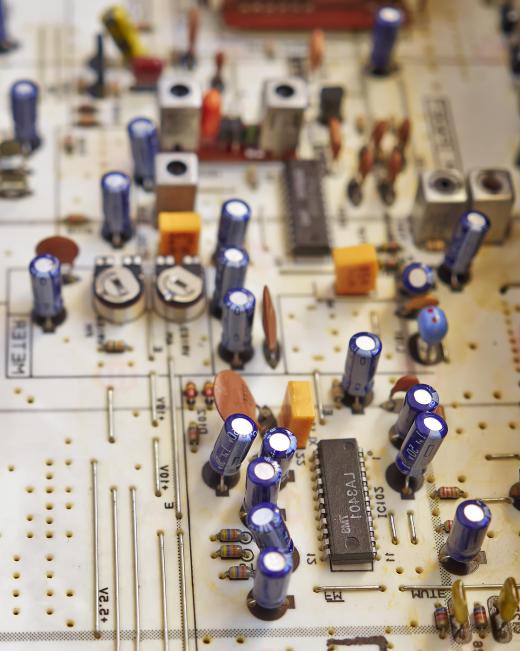A resistance box is a typically compact piece of equipment that contains multiple resistors hooked up to one or multiple switches and is designed to provide multiple electrical resistances. The primary benefit of having a compact way to alter electrical resistance is that it removes the need to actually change resistors or unit design just to change resistance. Many resistors can be set at many levels, providing immediate access to a combination of resistances, a possibility useful for many applications requiring electrical manipulation. The complexity of the resistance box will probably change based on the application, though many of these units are set to standard values.
A resistance box is a rheostat, a device meant to maintain specific electrical currents. This can be useful for testing the physical properties of electricity and for various other electrical applications. Early rheostats held only one current, though they evolved into more complex versions that can provide nearly unlimited variations in resistance at any given time. A modern resistance box can have a large range of resistances to make it useful in many situations. Useful perhaps in a laboratory or for experimental purposes, these devices usually contain some combination of resistors, mechanical switches and precision instruments.

One important aspect of resistance boxes is the variety of available designs and functions. High-end versions may have tighter electrical ranges and a multitude of available resistances. More advanced units may contain many switches meant to be used separately or in combination to manage a current and provide that resistance to an outside source. A simple resistance box, on the other hand, may only have a single switch or two, perhaps three, and may only be capable of providing standard resistance levels within less strict limitations. The overall design and functionality of the box will, of course, depend on its function.

Resistance boxes can be used in experimental, developmental and laboratory work. For instance, one might be used to assist in the design and manufacturing of a circuit. During the configuration of the circuit, it might be necessary to test which resistance will have the best effect given certain circuit characteristics. A decade resistance box, for instance, is normally used to alter the characteristics of laboratory circuits. Others may be tuned to low electrical frequencies to calibrate sensors or other resistance-based applications such as AC and DC bridges.
